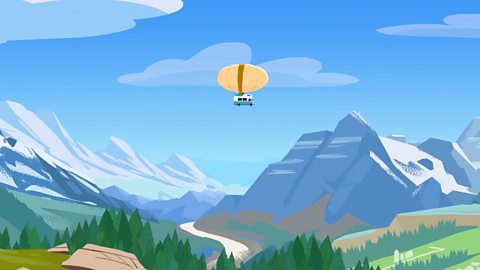What are the Alps?
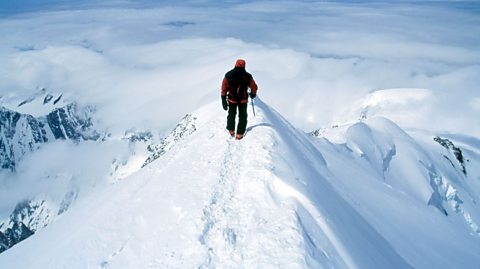
The Alps are a large mountain range in the middle of Europe.
They are spread over eight countries: France, Monaco, Italy, Switzerland, Liechtenstein, Austria, Germany and Slovenia.
The Alps are fold mountains. This means that they formed when two large tectonic plates slowly collided, pushing up the ground over tens of millions of years. This created some of the highest peaks in Europe. The highest mountain in the Alps is Mont Blanc.


What is it like in the Alps?
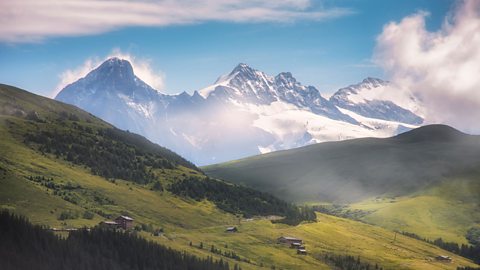
The weather in the Alps is affected by different temperatures of air coming from the north, west and south. These conditions create different types of climate, depending on height - the higher up the mountains, the colder it gets.

The tops of the mountains are covered in snow and glaciers, which are large blocks of ice.
Different types of animals and plants live in different climate zones. Some are not found anywhere else in the world, such as ibex goats.
Many river sources are in the Alps. When snow and ice melt in the spring and summer, they supply water to the rivers and lakes at the foot of the mountains.
Dams have been built to hold this water in order to create hydroelectric power for nearby towns and cities. Austria’s Kaprun power plants produce 700 kWh of power a year and make an important contribution to the country’s power supply.

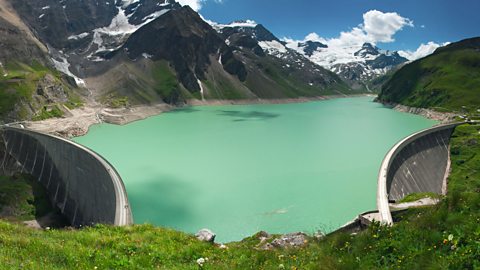
Watch: The Alps with Sue Venir
The Alps are Europe’s biggest mountain range and lie right at the heart of the continent. They stretch across eight countries: France, Switzerland, Italy, Monaco, Liechtenstein, Austria, Germany and Slovenia.
The mountains were formed millions of years ago as two giant tectonic plates collided, creating some of the highest mountains in Europe, like the Matterhorn, Mont Blanc, and the Eiger.
There are many glaciers here, these are massive blocks of ice that form high in the mountains.
Water from alpine glaciers and lakes provide most of Europe’s lowland water and is the source of some its main rivers, like the Rhine, the Rhone and the Po.
Lakes, like Geneva and Zurich in Switzerland, Como in Italy and Constance in Germany are renowned for their beauty. But not all the lakes here are natural. Some are man-made reservoirs for dams that provide hydroelectric power to towns and cities.
Although the electricity they generate is vital for people, the dams have an impact on wildlife. The ibex, a type of mountain goat, climb up them to find food! There are many rare animals and plants here that are adapted to living at high altitude and are found nowhere else in the world.
People have traditionally used the land here to make a living, with grassland in the valleys and hills perfect for farming and forests providing trees for woodworking. But these days a lot more money is made from tourists coming to sightsee, ski, walk and do other sports such as mountain biking and paragliding.
30 million visitors come to the Alps every year including meeee!
Climate Change
Rising temperatures due to climate change mean that some glaciers within the Alps are disappearing and this is changing the water balance. This means that many plant species in this region cannot adapt quickly enough and are then threatened with extinction.
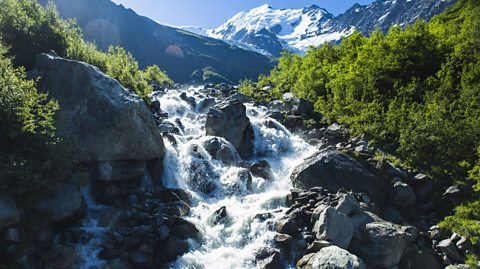
Melting ice due to higher temperatures can also make the soil unstable. This can cause landslides (when earth falls from a mountain or cliff). It can also lead to flooding further downstream.
These changes in the water balance may affect things that rely on existing seasonal melt patterns. For example, farmers need to know when they can water their crops.
What is tourism like in the Alps?
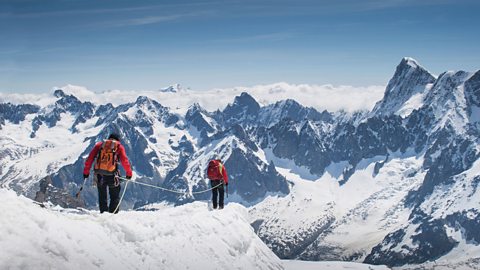
Tourism is the main industry in the Alps. Around 30 million people visit the Alps each year, enjoying activities such as:
- skiing and snowboarding
- walking
- sightseeing
- trail running
- mountain biking
- paragliding

Watch: A tour of the Alps
Activity: Quiz – The Alps
Bitesize Primary games. gameBitesize Primary games
Play fun and educational primary games in science, maths, English, history, geography, art, computing and modern languages.

More on People and places
Find out more by working through a topic
- count3 of 8
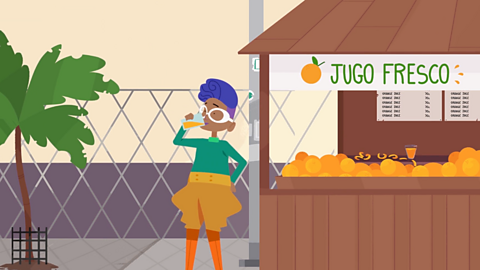
- count4 of 8
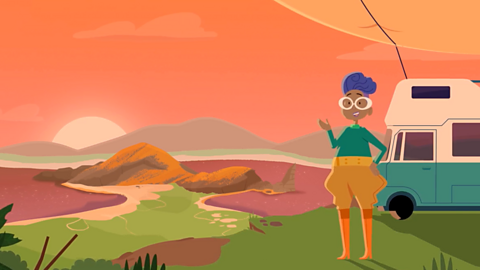
- count5 of 8
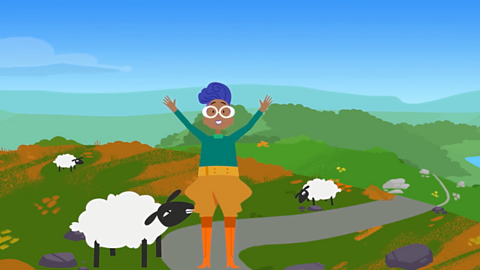
- count6 of 8
